After PC and smartphone chips, Qualcomm’s automotive division is today launching its “Elite” platform. Managing both the cabin and assisted driving, its Snapdragon chip will power the AI of the vehicles of the future.
The world number 1 in smartphone chips today announces two new building blocks for its automotive platform:
- Snapdragon Ride Elite, which supports driver assistance technologies (ADAS),
- Snapdragon Cockpit Elite, in charge of controlling the cabin equipment.
These platforms have the particularity of not operating on a multitude of chips, but of being centralized on a single chip.
Qualcomm is already an invisible champion of the automobile industry, which first used its know-how as a champion of telecoms. Thus, in 2022, 350 million vehicles (notably Volvo, Renault or Honda) will integrate one or more bricks of its “Digital Chassis” solution.
The company uses its computing technologies (CPU, GPU, NPU) from its mobile and PC R&D to carve out the lion’s share in the era of the electronic car which is dawning.
The same CPU core as PCs and smartphones
Qualcomm’s recent rise in the PC market thanks to its Snapdragon X Elite and the incredible promises of performance gains from its new Snapdragon 8 Elite mobile processor have many common roots. The most important being a new in-house CPU core called Oryon.
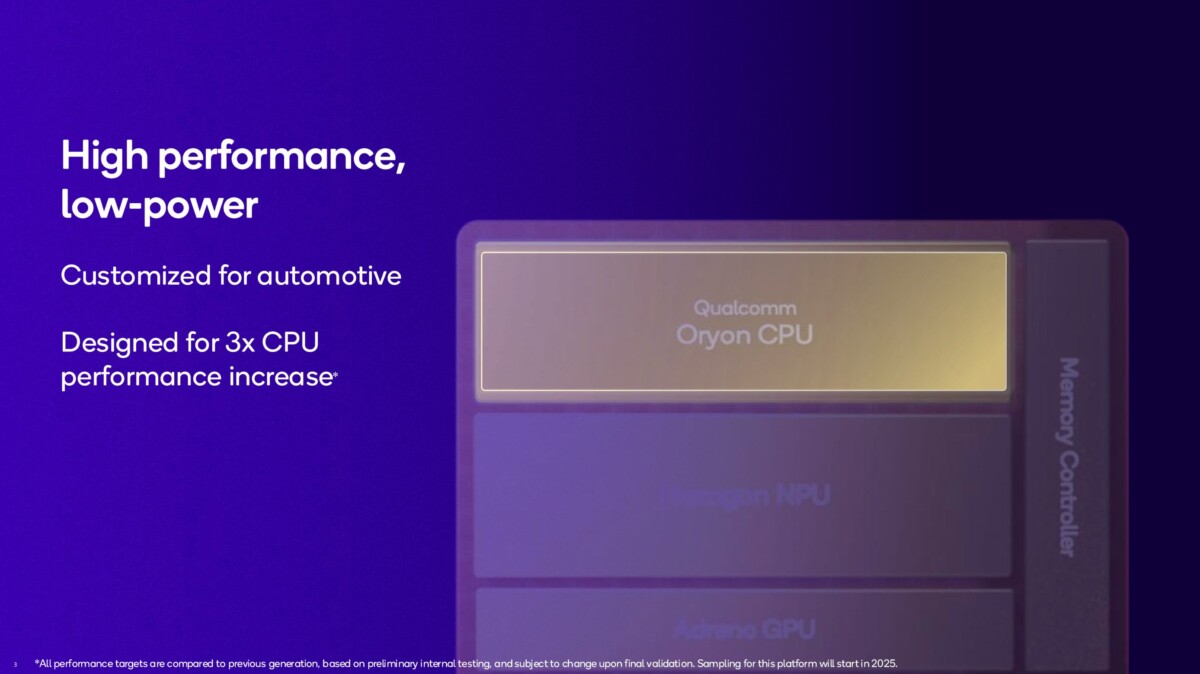
Breaking away from ARM’s designs, Qualcomm alone designs most of the technological building blocks of its all-in-one chips, the SoCs (system on a chip).
After having tried and then abandoned custom CPU cores, in 2021 Qualcomm bought the teams and plans of Nuvia, a company launched by industry leaders, including Gérard Williams who is none other than the father of the CPU of the Apple M1 and Snapdragon X Elite.
The resulting Oryon core that Qualcomm claims to be “the most powerful and efficient CPU core in the industry” is the technology it lacked to flex its muscles in many areas, such as in the automobile industry.
A heart that was necessary for Qualcomm to meet the thirst for computing power in the vehicles of the future.
Explosion of performance to keep up with the explosion of sensors
Compared to its previous auto platform, Snapdragon Ride Flex, the chip at the heart of Snapdragon Ride Elite and Cockpit Elite offers a completely different magnitude of power.
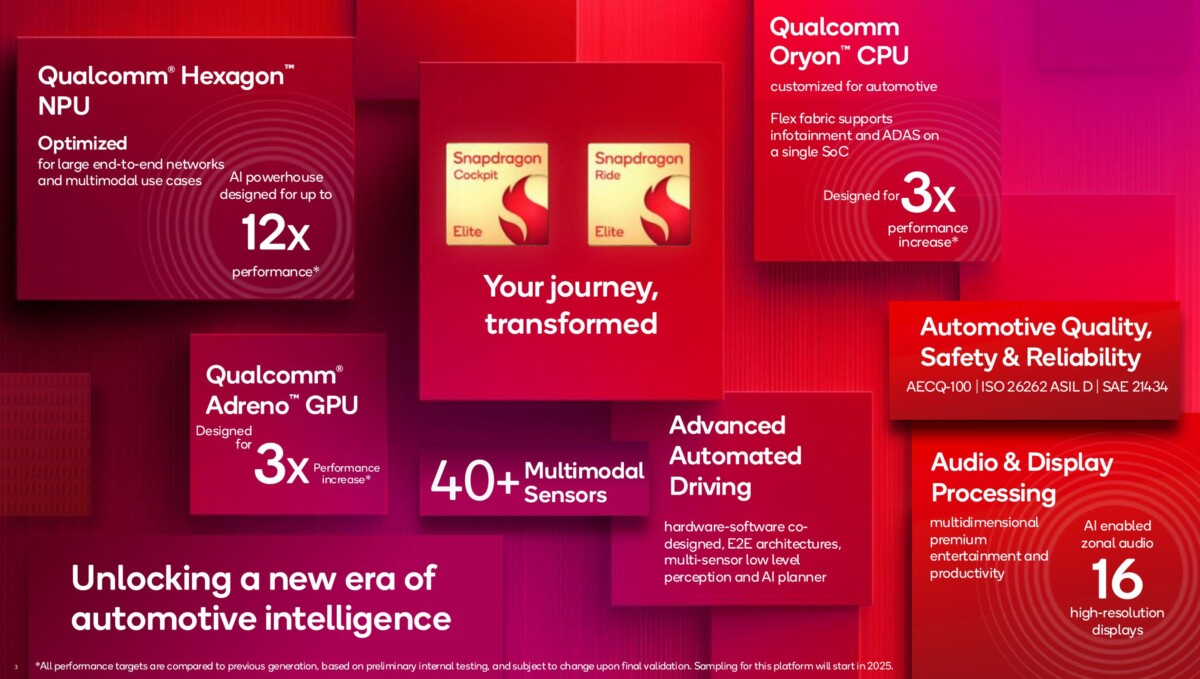
On the one hand, Oryon cores triple CPU power. Same story for the Adreno graphics part, which also sees its performance multiplied by three.
A graphics part which is not only in charge of graphic interfaces, 3D mapping, but also any entertainment systems: coupled with the display processor, it now manages up to 16 4K screens!
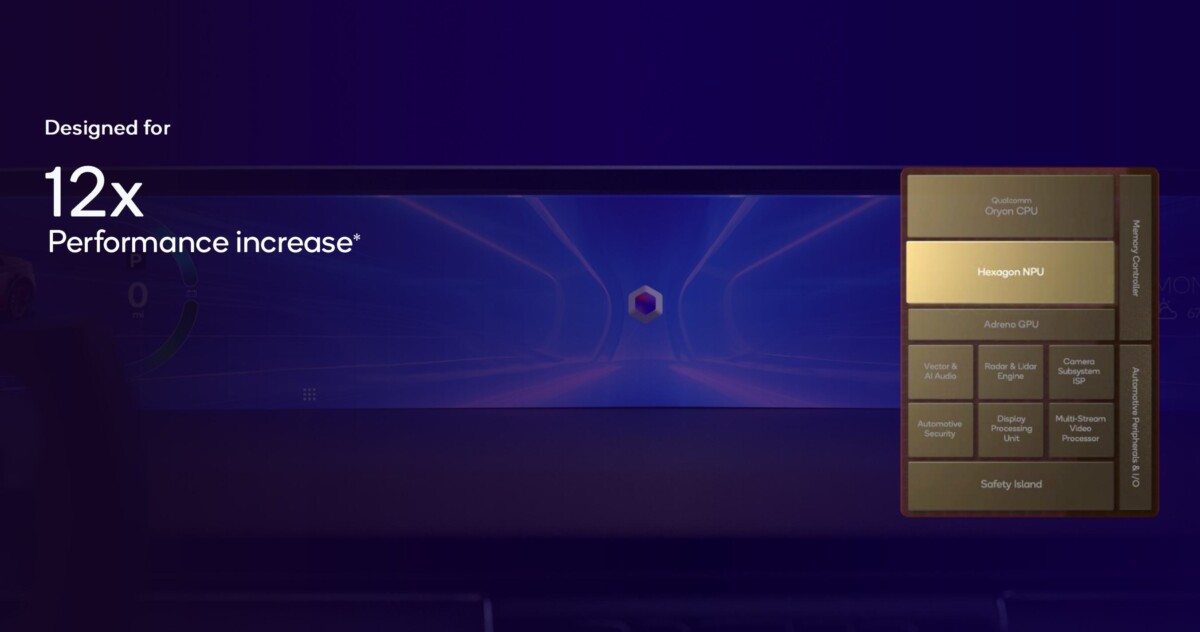
The quantum leap is to be found in the Hexagon neural processor (NPU), which sees its power multiplied by 12 to meet external imaging needs and the development of AI inside the vehicle.
This deluge of computing capacity is not there to look pretty, but to follow the explosion in the number of sensors involved in driving assistance, but also in increasingly fine-grained management of the passenger compartment.
When it comes to driving, the Snapdragon Elite chip at the heart of the device can manage up to 40 different sensors, including up to 20 high-resolution 16 Mpx 360° cameras.
If we find here another sub-chip developed for smartphones – an image processor, or ISP –, the NPU now pumped up with hormones is critical here, because it is it which will carry out the detection/classification/prediction tasks objects and trajectories.

And to go even further, Qualcomm’s Elite chip receives a component dedicated to processing information from LiDAR and radars.
These sensors are essential to the progress of autonomous driving systems, since it is by combining different sources that we can more effectively detect elements of the environment that could only be partially visible, or even hidden, to a single type of sensor. . Developing a dedicated chip (or rather here, a block of chips) has become necessary: the precision of these sensors is exploding, generating clouds of millions of points to process.
AI controls the cabin and supports vehicle maintenance
In addition to the driving part, the NPU and the other computing components will also manage the cabin part through cameras, since in addition to the modules placed outside, the cockpit may include interior cameras. Monitoring deemed “crucial” by Qualcomm, both to detect possible driver distractions or to understand the needs of passengers.
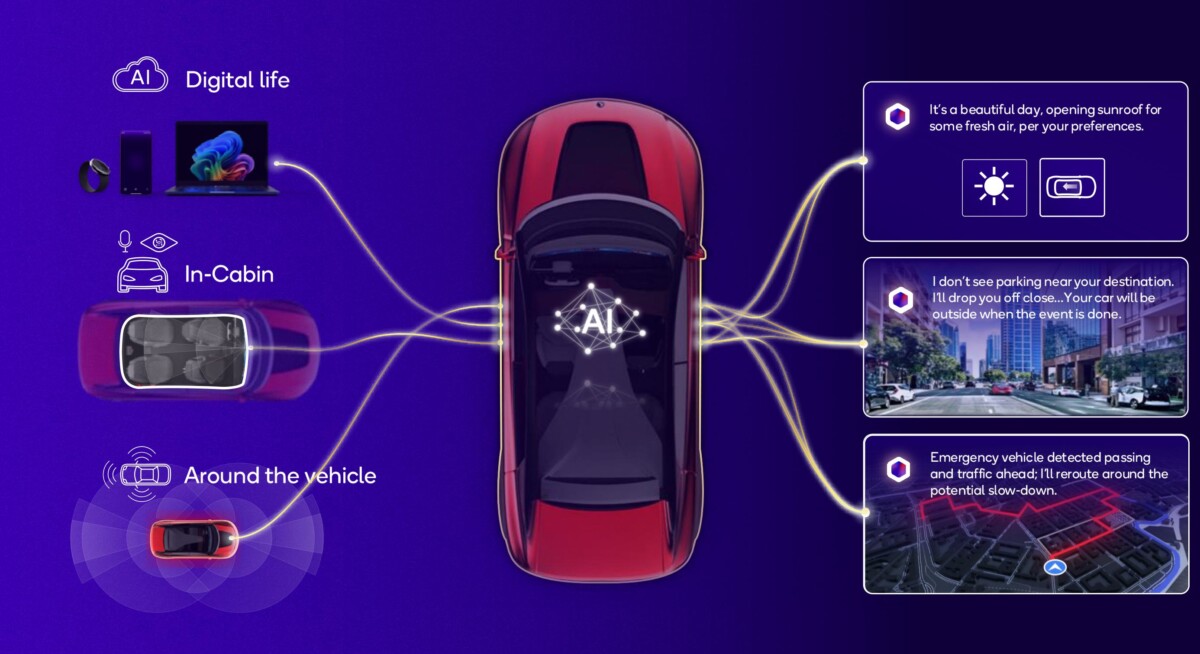
Needs which can therefore be expressed gesturally, but also audioly, since the algorithms potentially loaded into the system can also process the information expressed out loud. A complaint of cold could thus cause the heating to be turned up locally, without manual operation by the passenger.
To this AI-assisted management, support generative AI can also be added. Capable of managing large language models (LLM) of several billion parameters, the Snapdragon chip will be able to operate local assistants, such as an LLM dedicated to technical assistance trained on your vehicle’s maintenance manuals. The NPU will process the text or voice command, execute the maintenance LLM, and explain the response(s) by voice or via the vehicle screen.
With the power developed, Qualcomm ensures that local assistants will be able to learn and adapt to your preferences to potentially, over time, make recommendations and even take initiatives automatically (temperature settings, display in addition large charging stations when the battery is low, etc.). A real vehicle of the future!
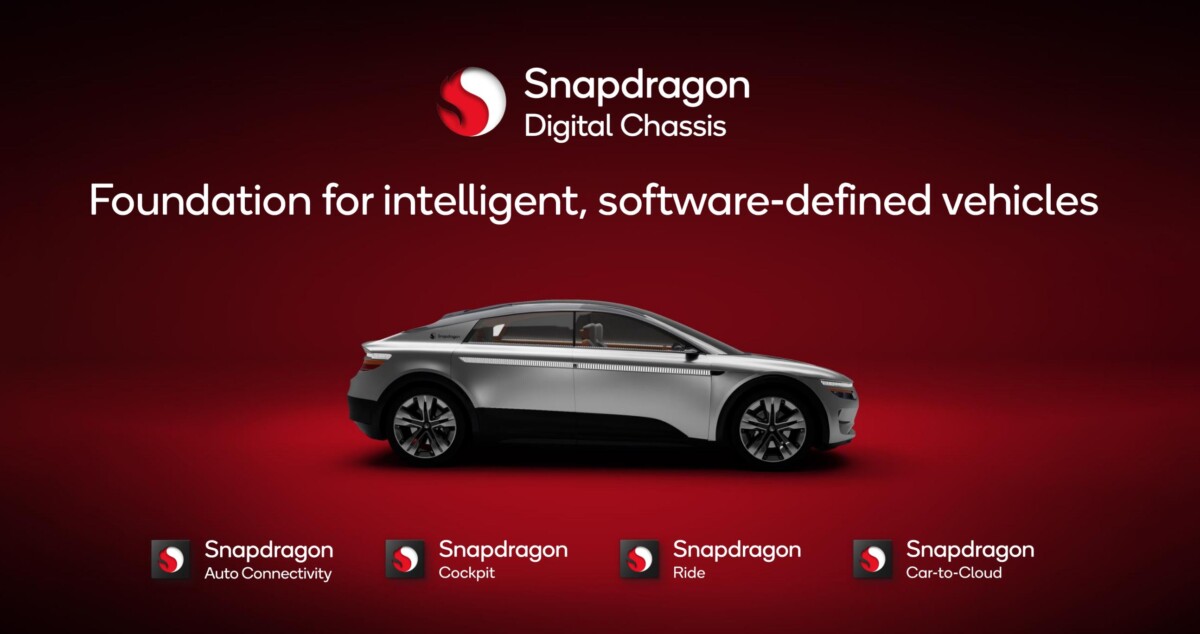
Don’t expect to see cars incorporating Snapdragon Ride Elite or Snapdragon Cockpit Elite on the road tomorrow: the first samples and test platforms will only be delivered to manufacturers during the year 2025 – and at that time, we will learn more about the nature of the chip (engraving, etc.).
Add to that the development and qualification time for vehicle parts, and we easily arrive at 2027-2028 to see the first equipped cars on the road.
Source: www.frandroid.com


